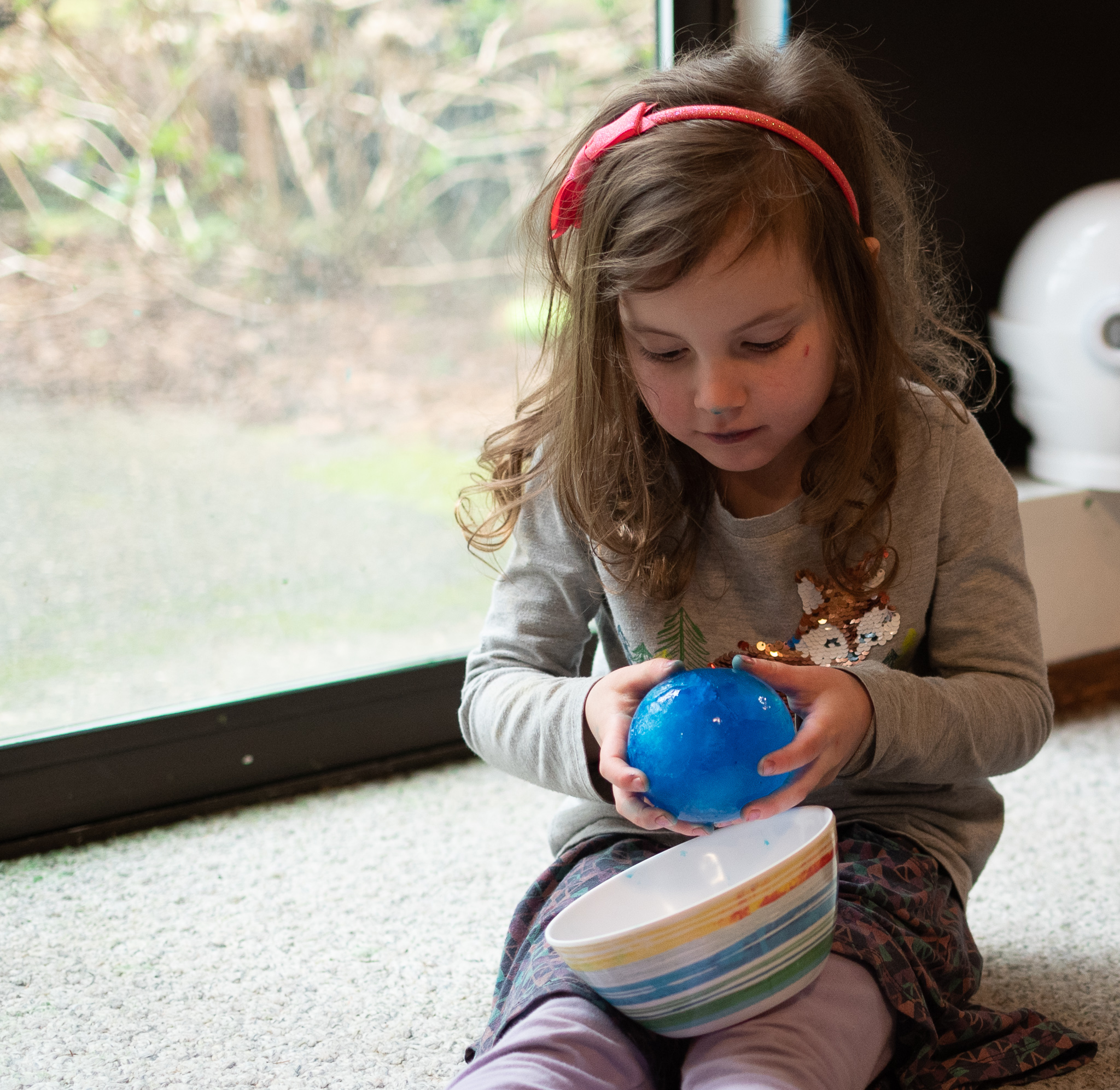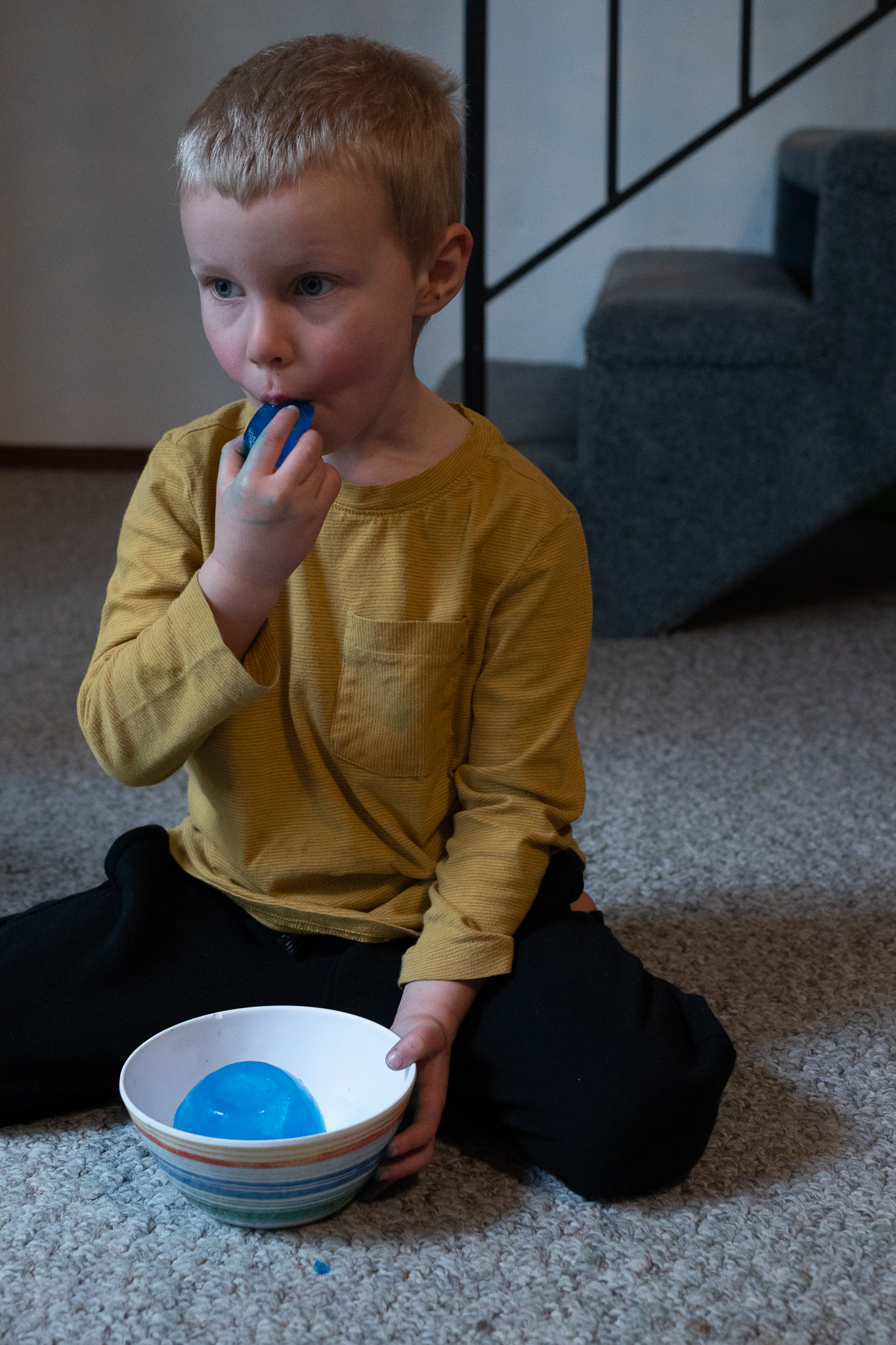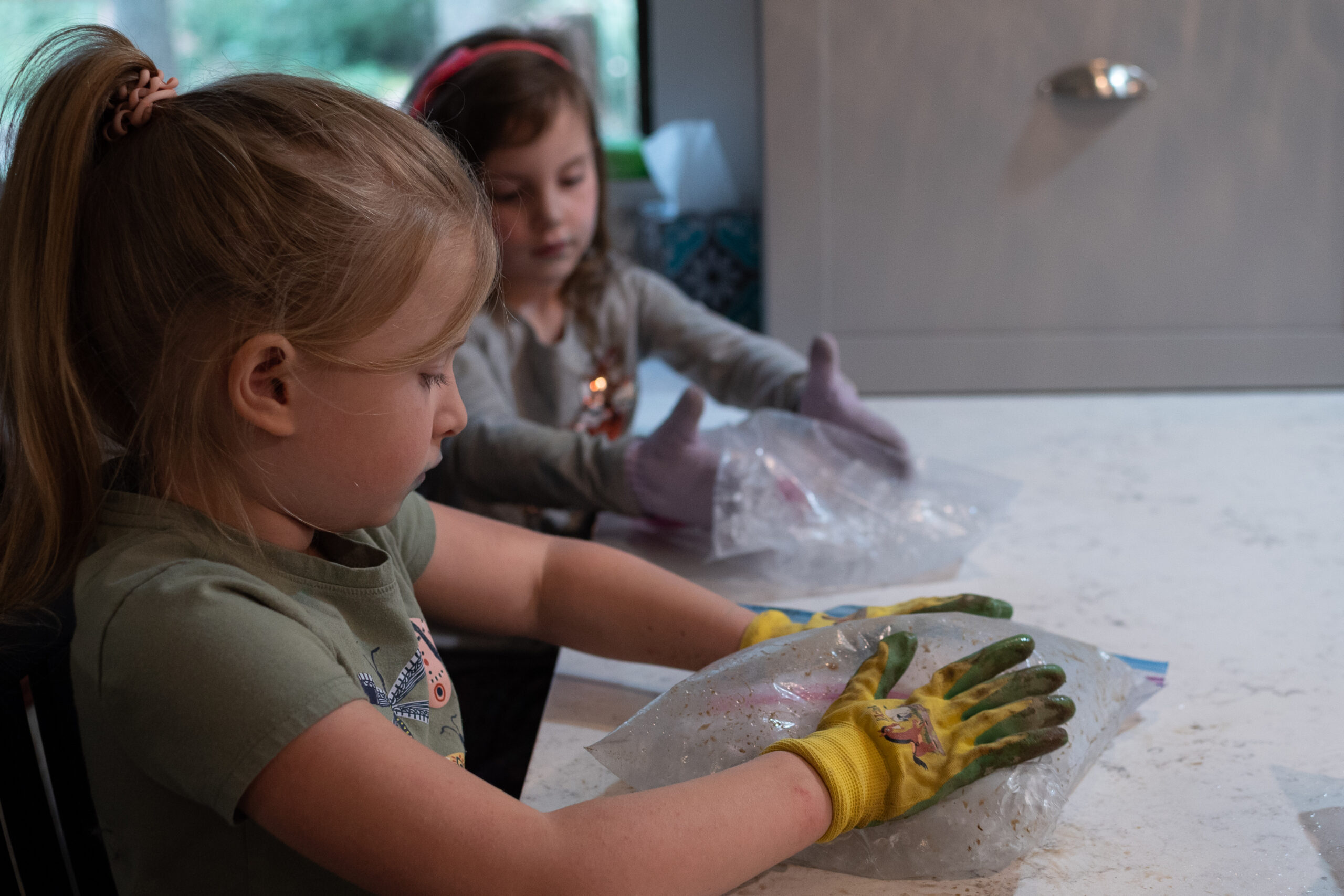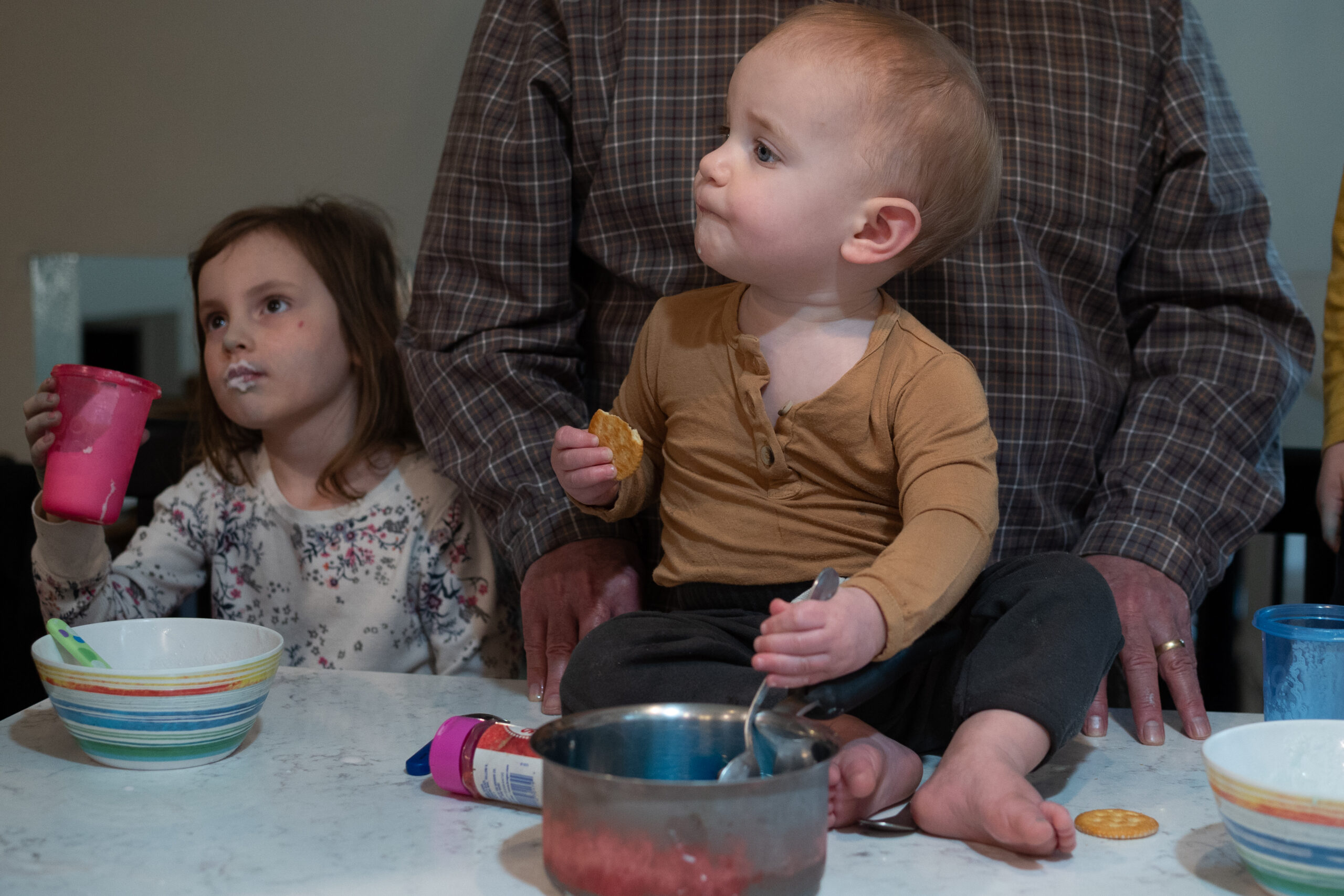Having heard rumblings of boredom with the ongoing Space Unit, Oma created an irresistable lesson plan. She froze blue water inside of balloons. She consulted Mrs. M on the particulars of ice cream making. She ordered rock salt and heavy cream from Clicklist. (Also Lunchables, chocolate milk, and Ritz crackers, as both mommies were dropping and leaving this day. There would be little time for pizza cooking or sandwich making.) She brought the fort materials in from the garage. All set.
Miss Em arrived early and hid from her cousins. Cousins arrived shortly thereafter and found her straightaway. Baby E snagged his favorite adult.
Neptune was the focus of today’s lesson. The preschoolers already knew that Neptune was the name of a planet; that it was blue; and that it was a gas giant. Neptune’s model currently hangs from Oma and Opa’s schoolroom ceiling, between Uranus and the non-planet, Pluto. (Oma’s sympathies lie with Pluto.)
Preschool enthusiasm for space had begun to wane of late. They know about the moon. They know about the sun. They know about planets (although they cannot name them in order, nor do they care to) and the stars. They know about rockets. They know about the Space Shuttles. (Mr. Mo dreamed of floating in space with Oma!) The “space wall” is a hit, even with visitors. The planet models haven’t dropped from the ceiling yet. Alas, Oma needed just a lesson or two more before shifting focus to bugs.
You’re up, Neptune.
“Today we’re going to learn all about Neptune!” she announced. “Can you point to Neptune?”
They did.
“What letter does Neptune start with?”
“N!”
“Right! Did you know Neptune is very, very big?”
They did.
“And did you know that Neptune is made of gases?”
Yep, they knew that, too.
“And did you know that Neptune is very, very cold?”
“Why?” asked one.
“Because it’s very, very far away from the sun,” answered Oma. “I have a surprise for you. Go sit on the floor and hide your eyes.”
Mr. Mo didn’t want to hide his eyes because he couldn’t find where to sit. Oma helped him and the girlies find the floor and sit on it. She tiptoed up to the kitchen and opened the freezer. Inside were three spheroids, made earlier by filling balloons with tap water and blue food color. Oma had peeled the balloon rubber from them right before Miss Em arrived that morning, and now she put each in a bowl and placed the bowls in front of the preschoolers.
She told them to open their eyes.
One of them asked what was in the bowl. “I made a Neptune model for each of you! Go ahead and touch it. What do you think?”
“Can we lick it?”
“Well, sure you can.”
“My hands are blue! Mmmm…it tastes good!”
Oma asked, as tongues licked frozen Neptune balls, if they would like to hold their Neptunes in their hands? They would, and they did, and they declared them too cold to hold but not too cold to lick. Oma thought briefly of what happens when a kid licks a frozen basketball pole in the snow, but she but let that go.
“Can you name other cold things?” asked Oma. They listed snow, ice, popsicles. “How about ice cream?”
“Yeah!”
“Shall we make some?” Of course we should, so all grabbed their Neptune bowls, took a slurp of the delicious-looking blue water, and headed to the kitchen.
Ice cream, as we adults know, is easily made from simple ingredients: ice, rock salt, cream, vanilla, sugar, and Ziplock bags. Salt depresses the freezing point of water, as a solution always freezes at a lower temperature than the solvent it is made from. Preschoolers don’t care about that, but they do care that their hands become very, very cold from shaking their ice cream bags for ten minutes. Opa and Oma jumped in to help, and voila! Ice cream was created and tossed into the freezer while Baby E had his after-nap drink.
Declaring the results not as thrilling as donuts or milkshakes, the preschoolers nonetheless ate their concoctions and shared the leftovers with Opa. Since Oma still has enough rock salt to make ice cream every Thursday from March through July, she is sure to try again.
Meanwhile, her final lesson in the Space unit will likely be “comets” and “asteroids.” Then, it’s on to bugs.





